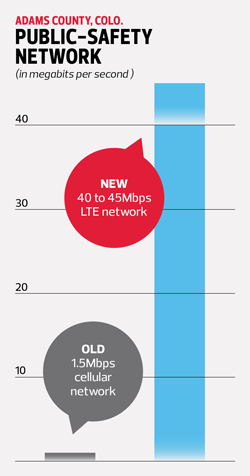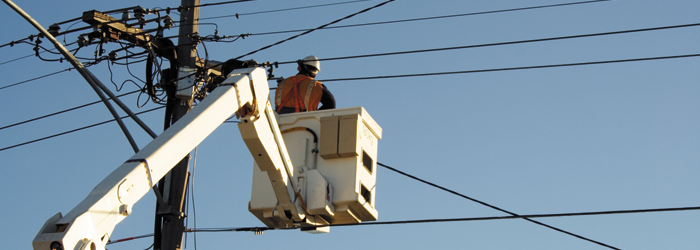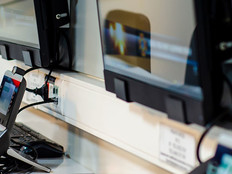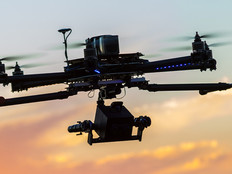How Local Governments Are Preparing for FirstNet
First responders in Charlotte, N.C., can now access critical applications and data faster than ever, thanks to an $11.2 million upgrade to the city’s public-safety communications infrastructure.
Charlotte’s IT department is modernizing its network, adding Wi-Fi at police and fire stations and upgrading cellular connections in police cars and fire trucks from 3G to 4G Long-Term Evolution (LTE) technology. The wireless upgrade provides a dramatic speed injection for each vehicle’s mobile computing devices.
“A police lieutenant recently said, ‘I feel like a caveman who discovered fire,’ ” says Randy Moulton, chief security officer for Charlotte. “The increased bandwidth makes a huge difference when they pull up apps. We were bottlenecked before.”
Charlotte’s network infrastructure investment has also prepared the city to join the planned nationwide public-safety broadband network when it’s built in North Carolina. Congress allocated $7 billion to the First Responder Network Authority (FirstNet), an independent authority of the National Telecommunications and Information Administration (NTIA), to build a nationwide LTE network dedicated to law enforcement, firefighters and emergency medical services.
While first responders will continue to rely on their land-mobile radio systems for voice communications, FirstNet will provide high-speed data and supplemental commercial-grade voice and, over time, mission-critical LTE voice capabilities as well.
“FirstNet is important because first responders have no priority from the commercial networks,” says Bill Schrier, a senior policy advisor in Washington state’s Office of the CIO. “During disasters, the public can overwhelm commercial networks as they try to reach family and friends. Police and firefighters have their own radio network to talk, but if the commercial networks are jammed, there’s no way to share data and maps.”
The new network will also be interoperable, allowing city, county, state and federal agencies to communicate and collaborate seamlessly during emergencies, says Schrier, the primary point of contact for his state’s FirstNet effort.
FirstNet officials have begun meeting with each state to discuss implementation plans and learn about each state’s needs. In the meantime, a handful of communities (including Adams County, Colo., and the states of New Jersey and New Mexico) have licensed wireless spectrum from FirstNet to build and pilot the public-safety broadband network.

Blanketing a County
Adams County’s 4G LTE network using FirstNet’s 700-megahertz band on the wireless spectrum is nearly complete.
The Adams County Communication Center (ADCOM911), which received a $12.2 million Broadband Technology Opportunities Program (BTOP) grant to build the network, has installed cellular equipment and new Cisco switches and routers at 14 sites and is awaiting permits for three more sites.
When complete, the network will span 1,200 square miles and cover portions of Denver, says Walt Leslie, assistant director of technology at ADCOM911, which provides dispatch services to 14 public agencies. Adams County will supply mobile devices and grant network access to surrounding agencies, such as Denver’s Fire Department and the Colorado State Patrol, so they can communicate and share information in mutual aid situations, he says.
ADCOM911, which equipped its first public-safety vehicle with network access in November, plans to deploy faster broadband to the county’s 3,000 public-safety vehicles through a phased approach in 2015. The agency expects to receive an initial allotment of 1,000 4G LTE wireless SIM cards for mobile devices by the end of 2014.
The faster speeds will allow first responders to access the records management system (RMS) and query databases — for instance, to check for arrest warrants — during traffic stops, Leslie says.
“Before, officers could access some portions of the RMS, but not all, and often what they could access was slow. As for database queries, the responses on 3G were often slow, forcing officers to either wait or to proceed without being fully informed,” he says. “Now, it’s not a problem. They can quickly access everything just as if they were sitting at a desktop PC in the office.”
Preparing for FirstNet
Charlotte’s IT leaders know all about the benefits of FirstNet. After receiving a $16.7 million BTOP grant, the city explored building its own 4G LTE network using FirstNet’s wireless spectrum. But in the end, city officials couldn’t get the business case to work. It’s currently more cost-effective to subscribe to a 4G LTE service through a wireless carrier, Moulton says.
So Charlotte restructured the grant to overhaul its network infrastructure all the way from the data center to the police and fire vehicles on the street, contributing $2.4 million to fund the project.
Charlotte CIO Jeff Stovall says the city’s public-safety agencies benefited immediately from the faster speeds and notes the city will be prepared to join FirstNet once the public-safety network is deployed in the area. “We would likely reconsider joining FirstNet once it can be offered at a competitive rate in our area compared with a carrier-based LTE service,” he says.
Among the improvements: The IT department overhauled the Cisco wired network core and access networks within the city’s 47 fire stations and 13 police stations, as well as rolling out 802.11ac Wi-Fi networks in those locations. “We are basically upgrading the bandwidth by a factor of 10 to 20 internally within the network infrastructure,” Moulton says.
Charlotte is also swapping out the aging mobile devices in its vehicles with new Panasonic Toughbooks for 800 police cars and a mix of Panasonic Toughbooks and Toughpads for 150 firetrucks. The devices run on a cellular LTE network. In order to upgrade to 4G, the city is installing Sierra Wireless routers in each vehicle that supports dual-band LTE access. Each router has two modem slots — one for a commercial cellular connection and the other for FirstNet, Moulton says. Charlotte has deployed 4G LTE modems in 100 vehicles and will install modems in the remaining vehicles by April, he says.
Police officers can now quickly access the RMS, criminal databases, geographic information system and mapping tools. Firefighters can now pull up building diagrams as they race to fires. The bandwidth upgrade also supports new video streaming applications that improve situational awareness.
“The police officers who have 4G LTE are thrilled with the performance improvement,” Stovall says. “3G is no longer sufficient for advanced applications like predictive crime analytics, which is available in most of our police cars. 4G has become more of a requirement than a ‘nice to have.’ ”










